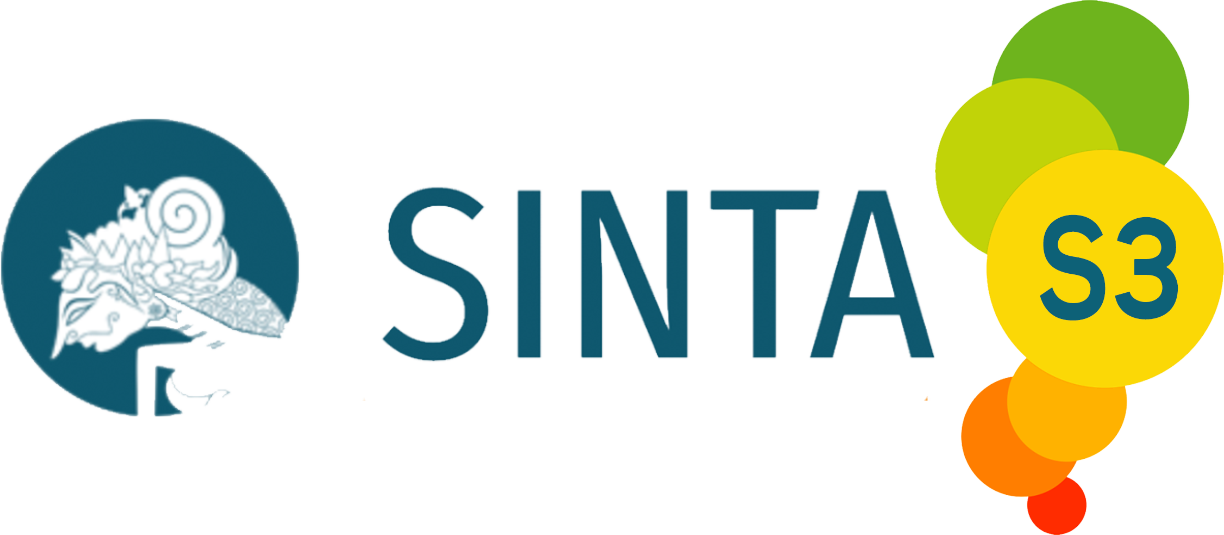Analysis of Istifham Sentences in QS. At-Tin Verse 8: A Study of Charles Sanders Peirce’s Semiotics
DOI:
https://doi.org/10.12928/taqaddumi.v3i2.9201Keywords:
Analysis, Istifham Sentences, Carles Sanders Peirce SemioticsAbstract
Istifham sentence is not always a question sentence that requires an answer. On the contrary, interogative sentence can function as a command sentence, news sentence and prohibition sentence. In balagah science, this kind of question sentence is classified as a majazi istifham sentence. It is a polemic in the academic world when balagah science cannot axplain the change of sentence function more clearly, only providing a theory when there are interogative sentence particles, such as the word “hamzah (اَ)” or “hal (هَلْ)” in verse. Therefore, this paper wants to explore in more detel the causes of the change of function of istifham setences using Peirce’s semiotic method. Where the concept of Peirce’s semiotics is a process of interpretation derived from the semiotic process of objects and representations which will produce interpretants. With the concept of Peirce’s semiotics, this paper focuses on exploring the interpretant of the istifham sentence in QS. At-Tin Verse 8. By using literature study and descriptive-analysis, the results of this research show that QS. At-Tin verse 8 as an example of an istifham sentence when studied with Peirce’s semiotic theory will find three interpretations. First, the istifham sentence in the verse is included in a potential question sentence that is still waiting for confirmation of the possibilities that exist. Second, the istifham sentence is included in the majazi istifham which gives the meaning of the statement and it’s factual nature, it’s factuality has been recognized in the science of balagah, and Third, as an affirmation that the fairest judge and justice is found from Allah Swt, where this is conventional which is found from the semiotic process of objects and representations of the previous verses.
References
Abdussalam, Izzuddin. Majaz Al-Qur’an: Salah Satu Kunci Utama Untuk Memahami Kandungan Kitab Suci. Edited by Ulya Fikriyati. Jakarta: Qaf Media Kreativa, 2023.
Al-Jurjani, Abdul Qahir. Dalail Al-I’jaz. Jeddah: Darul Madani, n.d.
Al-Khatib, Jalaluddin. Al-Idhah Fi ’Ulum Al-Balaghah. Beirut: Dar Al-Kutub Al-’Ilmiyah, 2010.
Al-Mahalli, Jalaluddin, and Jalaluddin As-Suyuthi. Tafsir Al-Qur’an Al-Karim. Semarang: Maktabah ’Alawiyah, n.d.
Ali, Amin, and Musthafa. Balaghah Al-Wadhihhah. Mesir: Dar Al-Ma’arif, 1951.
Baihaqi, Nurun Nisa. “Makna Salam Dalam Al-Qur’an (Analisis Semiotika Charles Sanders Peirce ).” Taqoddumi: Jurnal of Qur’an and Hadith Studies 1, no. 1 (n.d.).
Dahlan, Zaini. Qur’an Karim Dan Terjemahan Artinya. Yogyakarta: UII Press, 1999.
Djaelani, Ahmad. “Teknik Pengumpulan Data Dalam Penelitian Kualitatif.” PAWIYATAN 20, no. 11 (2013).
Hidayat, Hamdan. “Simbolsasi Warna Dalam Al-Qur’an Analisis Semiotika Charles Sanders Peirce.” Ibn Abbas: Jurnal Ilmu Alquran dan Tafsir 3, no. 2 (2020).
Keraf, Gorys. Tata Bahasa Indonesisa. Ende: Nusa Indah, 1984.
Kridalaksana, Harimurti. Kelas Kata Dalam Bahasa Indonesia. Jakarta: Gramedia Pustaka Utama, 1994.
Lajnah Pentashihan Al-Qur’an. Al-Qur’an Dan Terjemahannya Edisi Penyempurnaan. Jakarta: LPMA, 2019.
Lantowa, Jafar, Nila Mega Marahayu, and Muh Khairussibyan. Semiotika: Teori, Metode Dan Penerapannya Dalam Penelitian Sastra. Sleman: Deepublish, 2012.
Mandhur, Ibn. Lisan Al-’Araby. Beirut: Dar Al-ihya At-Turath Al-’Araby, 1996.
Mardiyah, Badiatul. “Pesan Dakwah Dalam Film Insyaallah Sah (Analisis Semiotika Charles Sanders Peirce).” UIN Sunan Ampel, 2019.
Moeliono, Anton M., Hans Lapoliwa, Soenjono Dardjowidjojo, and Hasan Alwi. Tata Basaha Baku Bahasa Indonesia. Jakarta: Balai Pustaka, 2017.
Nurdiyanto, Ade. “Istifham Dalam Al-Qur’an: Studi Analisa Balaghah.” El-Wasathiya: Jurnal Studi Agama 4, no. 2 (2016).
Pandean, Mariam L.M. “Kalimat Tanya Dalam Bahasa Indonesia.” Kajian Linguistik V, no. 3 (2018).
Solihat, Ilmi. “Makna Dan Fungsi Patung-Patung Di Bundaran Citra Raya Kabupaten Tanggerang Provensi Banten (Kajian Semiotika Charles Sanders Peirce).” Jurnal Membaca 2, no. 2 (2017).
Sudaryanto. Analisis Bahasa. Jakarta: Erlangga, 1992.
Sugiyono. Metode Penelitian Pendidikan (Pendekatan Kuantitatif, Kualitatif, Dan R&D). 27th ed. Bandung: Alfabeta, 2018.
Suwardi, and Muhammad Syaifullah. “Berbagai Pendekatan Hermeneutika Dalam Studi Islam: Sebuah Studi Literatur.” Acta Islamca Counsenesia: Counselling Research and Aplplications 2, no. 1 (2022).
Wardani, Laksmi Kusuma. “Simbolisme Liturgi Ekaristi Dalam Gereja Katolik Sebuah Konsepsi Dan Aplikasi Simbol.” Dimensi Interior 4, no. 1 (2006).
Wibowo, Indiwan Seto Wahyu. Semiotika Komunikasi Aplikasi Praktis Bagi Penelitian Dan Skripsi Komunikasi. Jakarta: Mitra Wacana Media, 2013.
Yunus, Mahmud. Tafsir Qur’an Karim. Jakarta: Mahmud Yunus Wa Dzurriyyah, 2015.
Downloads
Published
Issue
Section
License
Copyright (c) 2023 Zainul Ashri

This work is licensed under a Creative Commons Attribution-ShareAlike 4.0 International License.
License and Copyright Agreement
In submitting the manuscript to the journal, the authors certify that:
- They are authorized by their co-authors to enter into these arrangements.
- The work described has not been formally published before, except in the form of an abstract or as part of a published lecture, review, thesis, or overlay journal. Please also carefully read the Taqaddumi Author Guidelines at http://journal2.uad.ac.id/index.php/taqaddumi/about/submissions#onlineSubmissions
- That it is not under consideration for publication elsewhere,
- That its publication has been approved by all the author(s) and by the responsible authorities – tacitly or explicitly – of the institutes where the work has been carried out.
- They secure the right to reproduce any material that has already been published or copyrighted elsewhere.
- They agree to the following license and copyright agreement.
Copyright
Authors who publish with the Taqaddumi Journal agree to the following terms:
- Authors retain copyright and grant the journal right of first publication with the work simultaneously licensed under a Creative Commons Attribution License (CC BY-SA 4.0) that allows others to share the work with an acknowledgment of the work's authorship and initial publication in this journal.
- Authors are able to enter into separate, additional contractual arrangements for the non-exclusive distribution of the journal's published version of the work (e.g., post it to an institutional repository or publish it in a book), with an acknowledgment of its initial publication in this journal.
- Authors are permitted and encouraged to post their work online (e.g., in institutional repositories or on their website) prior to and during the submission process, as it can lead to productive exchanges, as well as earlier and greater citation of published work.








